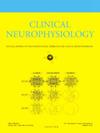On the concordance between electrical source imaging, anatomical and functional neuroimaging in patients with focal epilepsy
IF 3.7
3区 医学
Q1 CLINICAL NEUROLOGY
引用次数: 0
Abstract
Objective
Limited knowledge exists regarding how electrical source imaging (ESI) of interictal epileptiform discharges (IEDs) aligns with findings from other neuroimaging modalities. This study investigates the relationships of interictal ESI with MRI, 18FDG PET, SISCOM, and voxel-based morphometry (VBM) during presurgical evaluation of drug-resistant epilepsy (DRE).
Methods
A cross-sectional study evaluated the concordance of IED locations from ESI using various inverse solutions (CLARA, LAURA, LORETA, SLORETA, SWLORETA, SSLOFO) with MRI lesions, 18FDG PET, SISCOM, and VBM grey matter abnormalities. The role of ESI in presurgical evaluation of DRE was assessed.
Results
Significant relationships were identified between the localization and distribution of IEDs identified by ESI and the various sets of neuroimages. SLORETA and SWLORETA exhibited the highest concordance and interlobar associations with MRI, 18FDG PET and SISCOM. The main cluster of IEDs proved helpful in locating the epileptogenic zone (EZ).
Conclusions
The distribution of IEDs identified by the ESI technique exhibited a high degree of significant relationships with other neuroimaging sources. Its use may prove valuable in defining the epileptogenic zone.
Significance
Combining ESI of IEDs with other neuroimaging techniques may be useful in the presurgical evaluation of DRE.

求助全文
约1分钟内获得全文
求助全文
来源期刊

Clinical Neurophysiology
医学-临床神经学
CiteScore
8.70
自引率
6.40%
发文量
932
审稿时长
59 days
期刊介绍:
As of January 1999, The journal Electroencephalography and Clinical Neurophysiology, and its two sections Electromyography and Motor Control and Evoked Potentials have amalgamated to become this journal - Clinical Neurophysiology.
Clinical Neurophysiology is the official journal of the International Federation of Clinical Neurophysiology, the Brazilian Society of Clinical Neurophysiology, the Czech Society of Clinical Neurophysiology, the Italian Clinical Neurophysiology Society and the International Society of Intraoperative Neurophysiology.The journal is dedicated to fostering research and disseminating information on all aspects of both normal and abnormal functioning of the nervous system. The key aim of the publication is to disseminate scholarly reports on the pathophysiology underlying diseases of the central and peripheral nervous system of human patients. Clinical trials that use neurophysiological measures to document change are encouraged, as are manuscripts reporting data on integrated neuroimaging of central nervous function including, but not limited to, functional MRI, MEG, EEG, PET and other neuroimaging modalities.
 求助内容:
求助内容: 应助结果提醒方式:
应助结果提醒方式:


